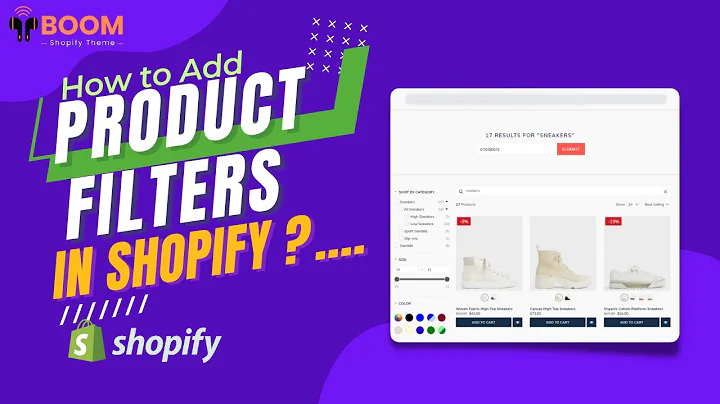Maximize Your Email Marketing Impact with A/B Testing
Table of Contents:
- Introduction
- Why Conduct A/B Testing for Emails
- Step 1: Creating a Hypothesis
- Step 2: Running the Test
- Step 3: Analyzing the Data
- Step 4: Rinse and Repeat
- A/B Testing Variables for Emails
7.1 Time Delay
7.2 Sending Time and Day
7.3 Subject Lines
7.4 Preview Text
7.5 Angles
7.6 Sender's Name
7.7 Offers
7.8 Call-to-Action (CTA)
7.9 Design
7.10 Copy
- Performing A/B Tests in Klaviyo
8.1 A/B Testing Sign-Up Forms
8.2 A/B Testing Flows
8.3 A/B Testing Campaigns
- Conclusion
A Complete Guide to A/B Testing Your Emails
Introduction
Welcome back to another video! In this complete guide, we will explore the world of A/B testing for your emails. While it may seem like a simple concept, there are several key points to consider to successfully optimize your emails. We will cover how to create a hypothesis, run the test, analyze the data, and repeat the process for continuous improvement. By following this A/B testing playbook, you will learn how to optimize your emails and achieve significant improvements in your email marketing results.
Why Conduct A/B Testing for Emails
A/B testing is an essential practice for any email marketer. By conducting A/B tests, you can compare variations of your emails to determine which performs better in terms of open rates, click rates, and conversion rates. This allows you to make data-driven decisions, optimize your email campaigns, and ultimately achieve higher revenue. A/B testing helps you identify what works and what doesn't, enabling you to fine-tune every aspect of your emails to better resonate with your audience.
Step 1: Creating a Hypothesis
Before diving into A/B testing, you need to create a hypothesis. Start by analyzing your initial data and identifying areas that could be improved. Define a clear goal for your test, such as increasing open rates or generating more sales. It's crucial to have a specific objective in mind so that you can accurately measure the success of your test. For example, if you're testing sending times and days, determine whether you want to optimize for open rates or revenue. This will help you make informed decisions based on the test results.
Step 2: Running the Test
Once you have a hypothesis, it's time to run the A/B test. You can test various variables in your emails, including time delays, sending times and days, subject lines, preview text, angles, sender's name, offers, CTAs, design, and copy. Start with the variables that have the highest impact, such as time delay and sending time. These tests can be performed once every six months or even once a year. Next, move on to subject lines and preview text, followed by angles, sender's name, offers, CTAs, design, and copy. It's essential to focus on one or two variables per test to accurately determine the impact of each change.
Step 3: Analyzing the Data
After running the A/B test, it's time to analyze the data. Compare the performance of the different variations to identify the winning version. Look at metrics such as open rates, click rates, conversion rates, and revenue. Remember to consider the overall impact on your goal, as a variation may perform better in certain metrics but not align with your objective. If you're not satisfied with the results, you can iterate and run another A/B test to further optimize your emails.
Step 4: Rinse and Repeat
A/B testing is a continuous process of refinement. Once you have analyzed the data and determined the winning variation, you can implement the changes and move on to testing the next variable. Email marketing is not a set-and-forget strategy; it's important to keep testing and optimizing to maximize your revenue potential. By constantly fine-tuning your emails, you can stay ahead of the competition and ensure your messages resonate with your audience.
A/B Testing Variables for Emails
There are multiple variables you can test in your email campaigns. Let's explore each one:
-
Time Delay:
- Test variations in the time delay between emails in your flows.
- Determine the optimal timing to engage your audience.
-
Sending Time and Day:
- Test different sending times and days to identify when your emails have the highest engagement.
- Optimize your email schedule for maximum open and click rates.
-
Subject Lines:
- Test different subject lines to capture your subscribers' attention.
- Find the subject lines that result in higher open rates.
-
Preview Text:
- Test different preview text to entice subscribers to open your emails.
- Craft compelling preview text that complements your subject line.
-
Angles:
- Test different angles or approaches in your email content.
- Explore diverse messaging strategies to resonate with different segments of your audience.
-
Sender's Name:
- Test different sender names to establish a personal connection with your subscribers.
- Find the sender name that garners the highest open and engagement rates.
-
Offers:
- Test different offers or incentives within your emails.
- Discover the offers that drive higher click-through rates and conversions.
-
Call-to-Action (CTA):
- Test different CTAs to encourage specific actions from your subscribers.
- Optimize your CTAs for maximum click-through and conversion rates.
-
Design:
- Test variations in email design, such as layout, colors, and visuals.
- Determine the design elements that enhance user experience and boost engagement.
-
Copy:
- Test different copywriting techniques and messaging styles.
- Craft compelling copy that resonates with your audience and drives action.
Performing A/B Tests in Klaviyo
Klaviyo makes it easy to perform A/B tests for your email campaigns. You can conduct A/B tests for sign-up forms, flows, and campaigns within the platform. To run an A/B test, simply create a test variation by modifying the desired variable, such as offer or subject line. Set the test parameters, such as test size and duration, and publish the test. Klaviyo provides analytics to help you analyze the results and determine the winning variation. By leveraging the A/B testing capabilities in Klaviyo, you can make data-driven decisions and continuously optimize your email marketing performance.
Conclusion
A/B testing is a crucial strategy for optimizing your email marketing efforts. By continuously testing and iterating, you can improve open rates, click-through rates, and conversions. It's important to have a clear hypothesis, focus on one or two variables per test, analyze the data thoroughly, and repeat the process to refine your email campaigns. With Klaviyo's A/B testing capabilities, you can easily experiment with different variations and make data-driven decisions to maximize your revenue potential. Start A/B testing your emails today and unlock the full potential of your email marketing strategy.
Highlights:
- A/B testing is essential for email marketers to optimize their campaigns and achieve higher revenue.
- Creating a hypothesis and defining a clear goal are crucial steps before running an A/B test.
- Variables to test include time delay, sending time and day, subject lines, preview text, angles, sender's name, offers, CTAs, design, and copy.
- Klaviyo provides a user-friendly platform for performing A/B tests in sign-up forms, flows, and campaigns.
- A/B testing is a continuous process that requires constant refinement and optimization of email campaigns.
FAQ:
Q: How often should I perform A/B tests for my emails?
A: It depends on your specific email marketing strategy and the frequency of changes in customer behavior. For variables like time delay and sending time, tests can be conducted once every six months or once a year. Other variables can be tested more frequently, depending on your campaign goals and data analysis.
Q: What metrics should I consider when analyzing the A/B test results?
A: Key metrics to consider include open rates, click-through rates, conversion rates, and revenue. However, it's important to align the metrics with your specific goal for the test. For example, if your goal is to optimize for open rates, focusing on this metric is more meaningful than solely looking at revenue.
Q: Can I test multiple variables simultaneously in an A/B test?
A: While it's possible to test multiple variables simultaneously, it's recommended to focus on one or two variables per test. This allows you to accurately determine the impact of each change and understand what specifically led to the improvement or decline in performance.
Q: How long should an A/B test run to obtain reliable results?
A: The duration of an A/B test depends on the size of your audience and the rate at which they engage with your emails. As a general guideline, it's advisable to run a test for at least a few days to capture different engagement patterns. However, keep in mind that the test duration can vary based on your specific circumstances and goals.
Q: Is A/B testing a one-time process, or should I continuously test my emails?
A: A/B testing is a continuous process of refinement and optimization. Customer behaviors, preferences, and market dynamics can change over time. Therefore, it's crucial to regularly test your emails to ensure they remain effective and aligned with your audience's preferences.






















